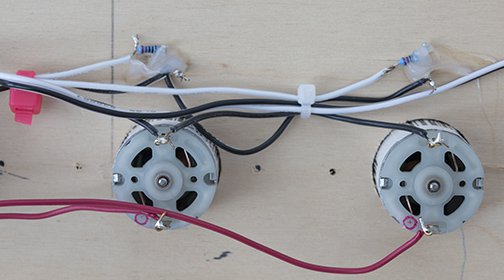Big parties need a conversation piece, and what’s better than a drink-making robot? Not only is it a good conversation starter, it also frees up the party host who would normally be the bartender. It turned out that the drink robot was a really good idea. The Mai Tai recipe presented here has the alcohol dialed back making it a good idea for a work party.

The robot is really an Arduino microprocessor (Uno version) that controls a number of pumps. A simple program allows the pumps to turn on for the required time to make a mixed drink. The machine is set to make one drink, but the programming and input switches can be changed to hold dozens of drinks. The idea here, is to get building and understand the basic concepts to make your own drink robot.
This drink robot starts with a recipe for the perfect Mai Tai drink. Since it was modified in a number of ways, I like to call this specific formula Margot’s Mai Tai, after my wife who perfected this particular recipe. There were a number of modifications (mainly the alcohol content was dialed back from three shots to a bit over one). There is a lot of potential for getting way too many people drunk at a party when all they have to do is push a button to make a drink. Also, this formula uses red grenadine and pineapple juice instead of the classic orange juice.
Making the Bot
The first step was to calibrate the pumps and see how fast they pumped liquid at 12 VDC. The motors I used were found on the Internet and cost about $5 each. Since they each draw 120 mA when pumping, I needed to use a power supply that could supply several amps to make the drink. The second design parameter was to determine how fast a drink could be reasonably made. I decided that 35 seconds was a reasonable time to wait for a drink.
Peristaltic pumps are used to deliver specific amounts of liquids and use a rolling ball mechanism in a section of flexible tube. These pumps are common in the food and medical industries. The smaller versions used in this project are common in the aquarium industry where they deliver chemicals to fish tanks.
The peristaltic pumps I used are able to pump 30 ml in 32 seconds. Be sure to test the delivery amount of any pump you use. I initially tested my pumps with water to get a close timing before having to adjust the times for the different liquids that had different viscosities and pumping speeds. Let’s make a time graph of the pump action:
The area of each graph represents the volume in milliliters that are pumped. The pump that pumps the rum is on for the longest amount of time since it has to pump the largest volume. This is one of the limiting factors for these small peristaltic pumps.
Read More: Build a Simple Cocktail Drinkbot with Arduino

